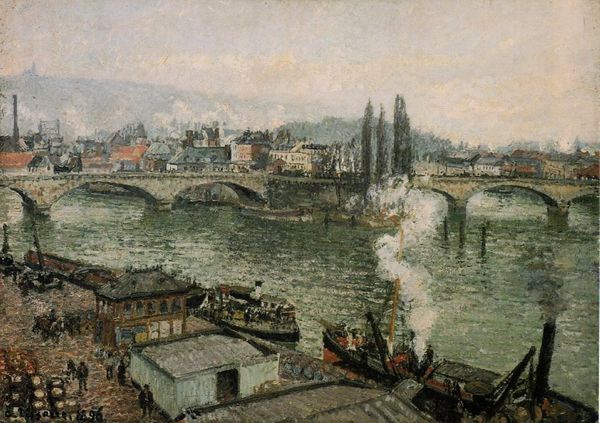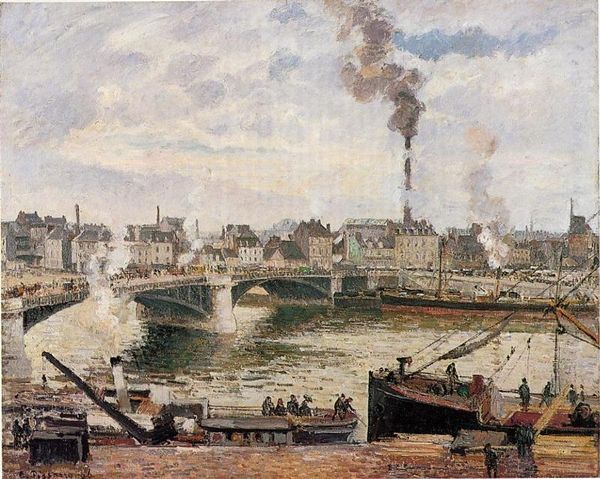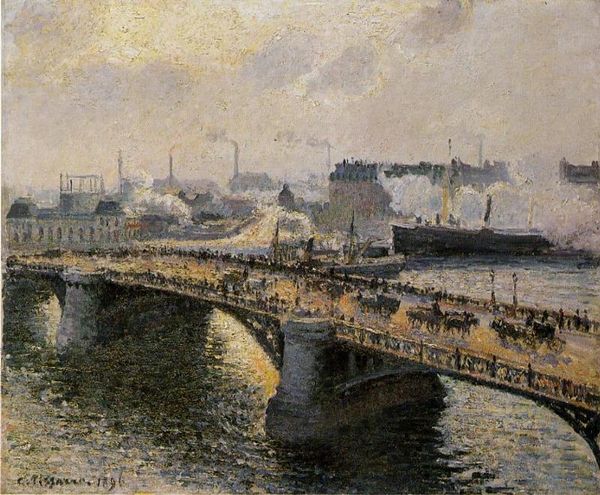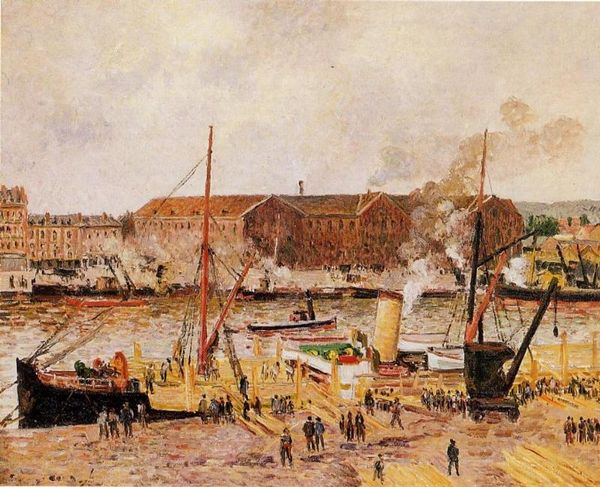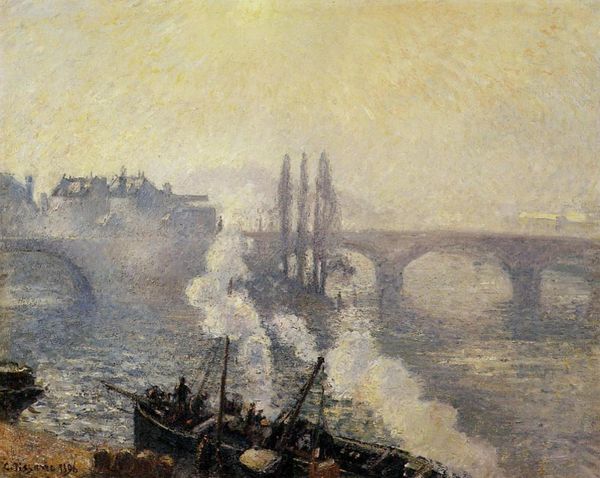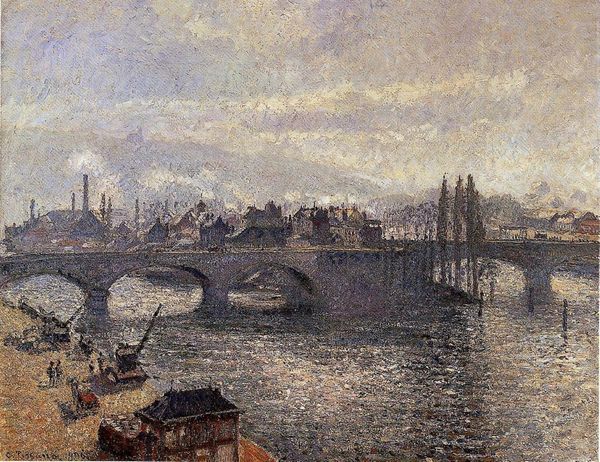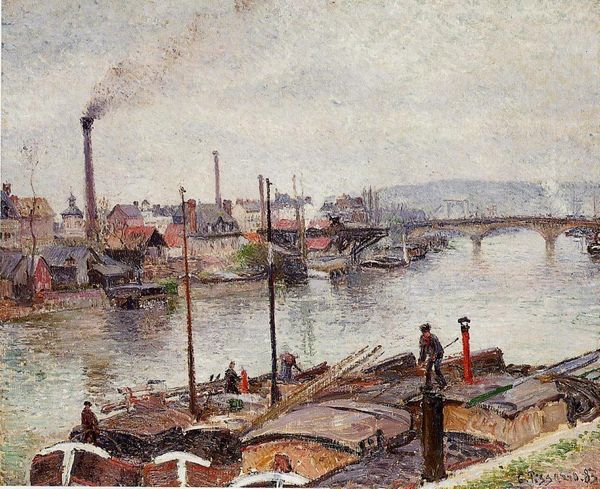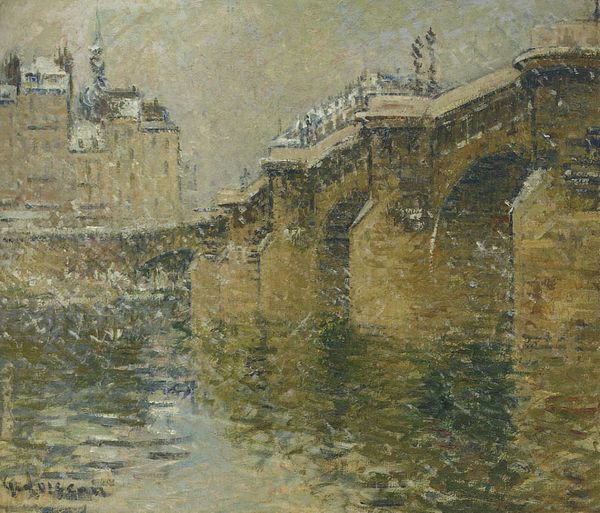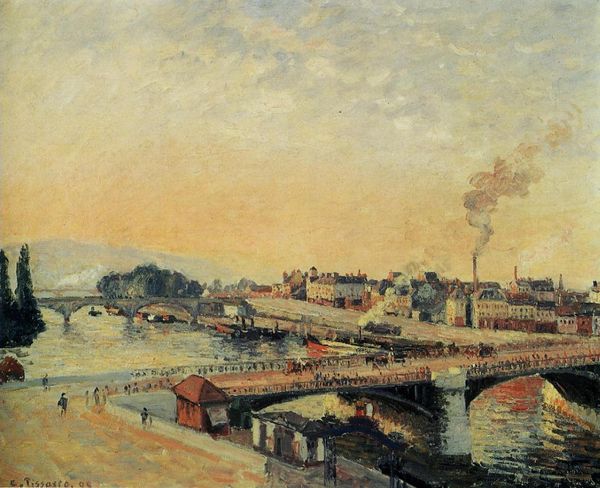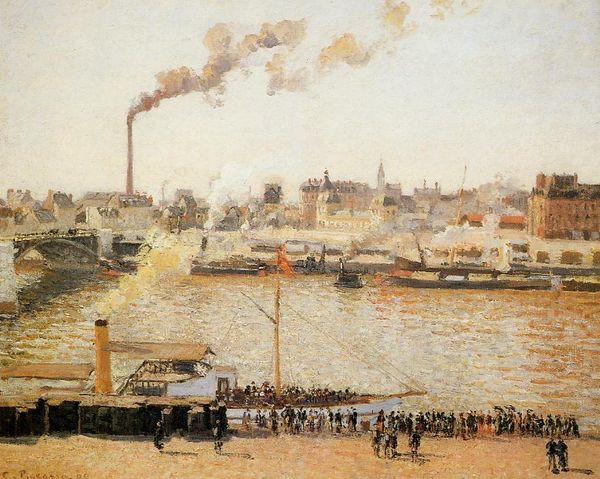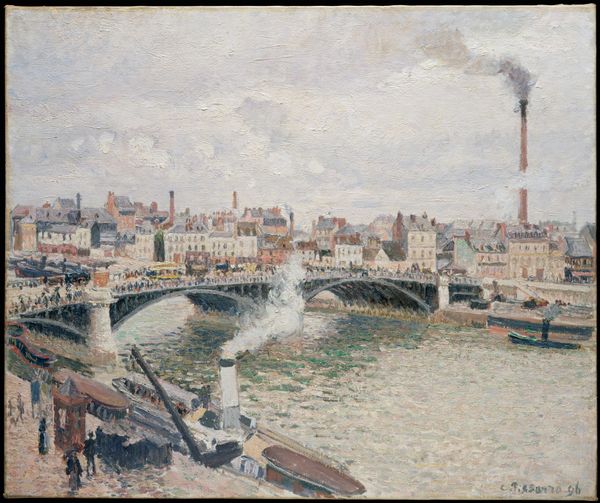
Dimensions: 73.7 x 91.4 cm
Copyright: Public domain
Editor: We're looking at Camille Pissarro's "The Pont Boieldieu, Rouen, Damp Weather" from 1896. It's an oil painting, and immediately I'm struck by how much is happening! The canvas is filled with bustling city life shrouded in this hazy atmosphere...it almost feels like the city is breathing. How do you interpret this work, particularly in its historical context? Curator: Pissarro wasn't just capturing a scene, he was documenting the rapidly changing face of industrializing France. Think about it – the bridge itself, a symbol of progress, teeming with laborers, goods, and the subtle, but ever-present, industrial smog. This painting begs us to question: who is truly benefiting from this "progress"? Is it shared equitably, or does it exacerbate existing inequalities, particularly along class lines? Notice the way the smoke blurs the architectural details – is Pissarro suggesting a loss of identity, a sacrifice of beauty for the sake of industrial output? Editor: That’s a fascinating perspective! I was focusing on the pretty colors and light. Curator: The beauty is intentional! Impressionism wasn’t just about aesthetics, it was a conscious artistic choice. Consider the Impressionists’ break from academic painting as a reflection of broader social and political upheavals of the time. These were radical choices. Where do you see evidence of that rebellion in the artwork? Editor: Well, maybe the quick brushstrokes? They feel less about idealizing the scene and more about capturing a fleeting moment. I guess that democratization of the subject matter aligns with socialist leanings of some Impressionists. Curator: Precisely! By focusing on everyday life and refusing to glorify traditional subjects, Pissarro challenged the established art world. Seeing "Damp Weather" becomes less about passive appreciation, and more about active questioning. How does this relate to contemporary issues? Editor: Now, I'm seeing the painting not just as a landscape, but as a mirror reflecting questions of labor, industry, and social equity, concerns that still resonate so powerfully today. Thanks, this has opened my eyes to see it on so many different levels! Curator: Indeed, this artwork shows how art can make you reflect critically about society’s ongoing struggles.
Comments
No comments
Be the first to comment and join the conversation on the ultimate creative platform.
